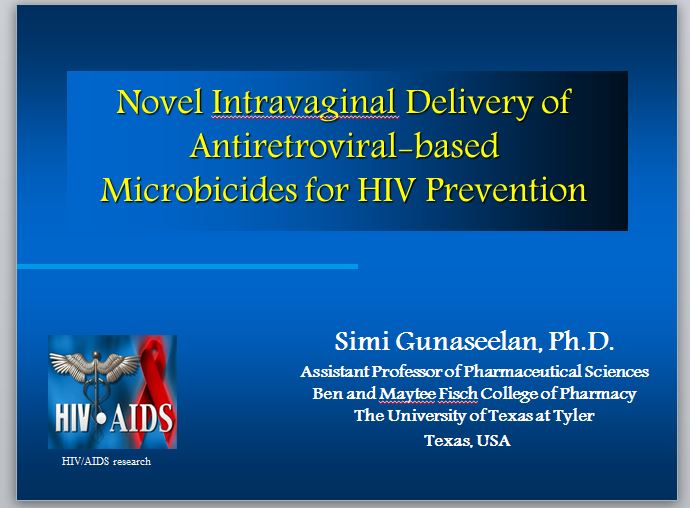
Simi Gunaseelan
University of Texas, USA.
Title: Novel Intravaginal Delivery of Antiretroviral-based Microbicides for HIV prevention
Biography
Gunaseelan’s research expertise is in drug delivery. For the past 10 years she has been working towards developing ‘Novel Drug Delivery Systems’ for HIV Prevention & HIV and Cancer Therapeutics. Her research works resulted in 5 patents, more than 20 publications in high-impact journals and presentations in 20 national and international conferences. Her dedication towards research work at Rutgers University School of Pharmacy New Jersey, led her to be a recipient of Merit Award for 3 consecutive years. She is currently a journal reviewer for Advanced Drug Delivery Reviews, Pharmaceutical Research, and Controlled Release Society Meeting Abstracts

Abstract
Objectives: Microbicides, products applied vaginally or rectally, are effective at preventing HIV transmission. However, many products (e.g., peptides, antiretroviral drugs) are reactive or incompatible in the existing diffusion/hydrolysis/dissolution based delivery systems. To overcome the issues of extended delivery and product compatibility, the use of a novel subliming solid matrix-based delivery system is described here. Methods: The microbicides C5A, tenofovir fumarate, emtricitabine, dapivarine, UC-781 and IQP0528 were employed as representatives of a range of molecular structures and physicochemical properties. Hydrophobic, chemically inert subliming solid matrices, utilized for microbicide formulations and achieving a defined range of sustained release rates, included norbornane, hexamethylcyclotrisiloxane, perfluoroundecane, perfluorododecane and cyclododecane. Rates of matrix sublimation and concomitant microbicide release were determined in vitro. Formulations were tested for cellular toxicity, and durations of anti-HIV-1 activity by constant release of microbicides from the sublimable matrices. Results: Subliming solid matrices release microbicides by surface erosion achieved through sublimation. Zero order sustained microbicide release was achieved in vitro, at rates independent of microbicide structures and properties, and controlled exclusively by sublimation enthalpies of each hydrophobic matrix material. The matrices provided prolongation of anti-HIV-1 activity relative to bolus microbicide administration, when evaluated in cultured human ectocervical tissue, macrophages, and TZM reporter cells. No evidence of matrix toxicity was observed after continuous exposure to macrophages, T-lymphocytes, PBMC cells and ectocervical explants. Implications: Subliming matrices offer unique attributes that will allow steady-state delivery of any microbicide, over durations ranging from weeks to months, by employing, simple, stable, and readily available matrix materials, suggesting novel delivery capabilities.
Speaker Presentations











